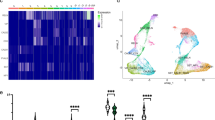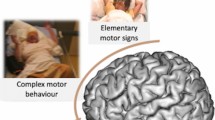Abstract
Absence seizures are not only associated with abnormal interactions in basal gangliacorticothalamic (BGCT) circuits, but are also influenced by glial functions. By introducing extracellular glutamate dynamics associated with neurons and astrocytes, we develop a BGCT model containing the astrocytic function module to simulate seizure phenomena resulting from insufficient glutamate uptake from astrocytes. Differential alterations in the occurrence threshold of spike wave discharges (SWDs) are found by comparing the astrocytic function parameter under different \(\textrm{GABA}_{\textrm{A}}\) or \(\textrm{GABA}_{\textrm{B}}\) inhibition degrees from the reticular nuclei (TRN). Specifically, with enhancement from \(\textrm{GABA}_{\textrm{A}}\) inhibition, thresholds undergo the non-monotonic change, whereas raising \(\textrm{GABA}_{\textrm{B}}\) inhibition will always increase thresholds. Afterwards, we reveal the effects of deep brain stimulation (DBS) frequency and timing on seizure waveform under different pathological degree. Most importantly, a closed-loop strategy based on extracellular glutamate concentration is proposed, which is more on-demand and current-saving than traditional open-loop stimulation. Our theoretical study may provide insights into understanding the astrocytic triggers of absence seizures and further designing regulatory strategies.









Similar content being viewed by others
Data availability statement
Data sharing not applicable to this article as no datasets were generated or analysed during the current study.
References
Crunelli, V., Leresche, N.: Childhood absence epilepsy: genes, channels, neurons and networks. Nat. Rev. Neurosci. 3(5), 371–382 (2002)
Panayiotopoulos, C.P.: Typical absence seizures and related epileptic syndromes: assessment of current state and directions for future research. Epilepsia 49(12), 2131–2139 (2008)
Larsen H (1980) Chapter 3 ecology of hypersaline environments. In: Developments in Sedimentology, vol 28, pp 23–39. Elsevier
Farizatto, K.L., Baldwin, K.T.: Astrocyte-synapse interactions during brain development. Curr. Opin. Neurobiol. 80, 102704 (2023)
Vainchtein, I.D., Molofsky, A.V.: Astrocytes and microglia: in sickness and in health. Trends Neurosci. 43(3), 144–154 (2020)
Snead, O.C.: Basic mechanisms of generalized absence seizures. Ann. Neurol. 37(2), 146–157 (1995)
Destexhe, A.: Spike-and-wave oscillations based on the properties of GABA \(_{\rm b }\) receptors. J. Neurosci. 18(21), 9099–9111 (1998)
Destexhe, A.: Cortico-thalamic feedback: a key to explain absence seizures. In: Soltesz, I., Staley, K. (eds.) Computational Neuroscience in Epilepsy, pp. 184–214. Elsevier, Amsterdam (2008)
Avoli, M.: A brief history on the oscillating roles of thalamus and cortex in absence seizures: thalamus and Cortex Roles in Absence Seizures. Epilepsia 53(5), 779–789 (2012)
Chen, M., Guo, D., Wang, T., Jing, W., Xia, Y., Xu, P., Luo, C., Valdes-Sosa, P.A., Yao, D.: Bidirectional control of absence seizures by the basal ganglia: a computational evidence. PLoS Comput. Biol. 10(3), e1003495 (2014)
Arakaki, T., Mahon, S., Charpier, S., Leblois, A., Hansel, D.: The role of striatal feedforward inhibition in the maintenance of absence seizures. J. Neurosci. 36(37), 9618–9632 (2016)
Paz, J.T., Chavez, M., Saillet, S., Deniau, J.M., Charpier, S.: Activity of ventral medial thalamic neurons during absence seizures and modulation of cortical paroxysms by the nigrothalamic pathway. J. Neurosci. 27(4), 929–941 (2007)
Seifert, G., Carmignoto, G.: Steinhäuser C: Astrocyte dysfunction in epilepsy. Brain Res. Rev. 63(1–2), 212–221 (2010)
Dutuit, M., Touret, M., Szymocha, R., Nehlig, A., Belin, M.F., Didier-Bazes, M.: Decreased expression of glutamate transporters in genetic absence epilepsy rats before seizure occurrence. J. Neurochem. 80(6), 1029–1038 (2002)
Touret, M., Parrot, S., Denoroy, L., Belin, M.F., Didier-Bazes, M.: Glutamatergic alterations in the cortex of genetic absence epilepsy rats. BMC Neurosci. 8(1), 69 (2007)
Gobbo, D., Scheller, A., Kirchhoff, F.: From physiology to pathology of cortico-thalamo-cortical oscillations: astroglia as a target for further research. Front. Neurol. 12, 661408 (2021)
Patel, D.C., Tewari, B.P., Chaunsali, L., Sontheimer, H.: Neuron-glia interactions in the pathophysiology of epilepsy. Nat. Rev. Neurosci. 20(5), 282–297 (2019)
Suffczynski, P., Kalitzin, S., Lopes Da Silva, F.: Dynamics of non-convulsive epileptic phenomena modeled by a bistable neuronal network. Neuroscience 126(2), 467–484 (2004)
Taylor, P.N., Baier, G., Cash, S.S., Dauwels, J., Slotine, J.J., Wang, Y.: A Model of Stimulus Induced Epileptic Spike-wave Discharges, pp. 53–59. IEEE, Singapore (2013)
Wendling, F., Bartolomei, F., Bellanger, J.J., Chauvel, P.: Epileptic fast activity can be explained by a model of impaired GABAergic dendritic inhibition: Epileptic activity explained by dendritic dis-inhibition. Eur. J. Neurosci. 15(9), 1499–1508 (2002)
Jirsa, V.K., Stacey, W.C., Quilichini, P.P., Ivanov, A.I., Bernard, C.: On the nature of seizure dynamics. Brain 137(8), 2210–2230 (2014)
Robinson, P.A., Rennie, C.J., Rowe, D.L.: Dynamics of large-scale brain activity in normal arousal states and epileptic seizures. Phys. Rev. E 65(4), 041924 (2002)
Breakspear, M., Roberts, J.A., Terry, J.R., Rodrigues, S., Mahant, N., Robinson, P.A.: A unifying explanation of primary generalized seizures through nonlinear brain modeling and bifurcation analysis. Cereb. Cortex 16(9), 1296–1313 (2006)
Marten, F., Rodrigues, S., Benjamin, O., Richardson, M.P., Terry, J.R.: Onset of polyspike complexes in a mean-field model of human electroencephalography and its application to absence epilepsy. Philos. Trans. R. Soc. A Math. Phys. Eng. Sci. 367(1891), 1145–1161 (2009)
Chen, M., Guo, D., Li, M., Ma, T., Wu, S., Ma, J., Cui, Y., Xia, Y., Xu, P., Yao, D.: Critical roles of the direct GABAergic pallido-cortical pathway in controlling absence seizures. PLoS Comput. Biol. 11(10), e1004539 (2015)
Chen, M., Guo, D., Xia, Y., Yao, D.: Control of absence seizures by the thalamic feed-forward inhibition. Front. Comput. Neurosci. 11, 31 (2017)
Tang, J., Liu, T.B., Ma, J., Luo, J.M., Yang, X.Q.: Effect of calcium channel noise in astrocytes on neuronal transmission. Commun. Nonlinear Sci. Numer. Simul. 32, 262–272 (2016)
Reato, D., Cammarota, M., Parra, L.C., Carmignoto, G.: Computational model of neuron-astrocyte interactions during focal seizure generation. Front. Comput. Neurosci. 6, 81 (2012)
Wade, J.J., McDaid, L.J., Harkin, J., Crunelli, V., Kelso, J.A.S.: Bidirectional coupling between astrocytes and neurons mediates learning and dynamic coordination in the brain: A multiple modeling approach. PLoS ONE 6(12), e29445 (2011)
Tewari, S., Majumdar, K.: A mathematical model of tripartite synapse: astrocyte induced synaptic plasticity. J. Biol. Phys. 38(3), 465–496 (2012)
Flanagan, B., McDaid, L., Wade, J., Wong-Lin, K., Harkin, J.: A computational study of astrocytic glutamate influence on post-synaptic neuronal excitability. PLoS Comput. Biol. 14(4), e1006040 (2018)
Ullah, G., Cressman, J.R., Jr., Barreto, E., Schiff, S.J.: The influence of sodium and potassium dynamics on excitability, seizures, and the stability of persistent states: II. network and glial dynamics. J. Comput. Neurosci. 26(2), 171–183 (2009)
Li, J., Song, J., Tan, N., Cao, C., Du, M., Xu, S., Wu, Y.: Channel block of the astrocyte network connections accounting for the dynamical transition of epileptic seizures. Nonlinear Dyn. 105(4), 3571–3583 (2021)
Garnier, A., Vidal, A., Benali, H.: A theoretical study on the role of astrocytic activity in neuronal hyperexcitability by a novel neuron-glia mass model. J. Math. Neurosci. 6(1), 10 (2016)
Bui, A.D., Alexander, A., Soltesz, I.: Seizing control: from current treatments to optogenetic interventions in epilepsy. Neuroscientist 23(1), 68–81 (2017)
Valentín, A., García Navarrete, E., Chelvarajah, R., Torres, C., Navas, M., Vico, L., Torres, N., Pastor, J., Selway, R., Sola, R.G., Alarcon, G.: Deep brain stimulation of the centromedian thalamic nucleus for the treatment of generalized and frontal epilepsies. Epilepsia 54(10), 1823–1833 (2013)
Wang, Z., Wang, Q.: Stimulation strategies for absence seizures: targeted therapy of the focus in coupled thalamocortical model. Nonlinear Dyn. 96(2), 1649–1663 (2019)
Fan, D., Wang, Q.: Improved control effect of absence seizures by autaptic connections to the subthalamic nucleus. Phys. Rev. E 98(5), 052414 (2018)
Fan, D., Zheng, Y., Yang, Z., Wang, Q.: Improving control effects of absence seizures using single-pulse alternately resetting stimulation (SARS) of corticothalamic circuit. Appl. Math. Mech. 41(9), 1287–1302 (2020)
Fan, D., Zhang, L., Wang, Q.: Transition dynamics and adaptive synchronization of time-delay interconnected corticothalamic systems via nonlinear control. Nonlinear Dyn. 94(4), 2807–2825 (2018)
Fan, D., Wang, Q.: Closed-loop control of absence seizures inspired by feedback modulation of basal ganglia to the corticothalamic circuit. IEEE Trans. Neural Syst. Rehabil. Eng. 28(3), 581–590 (2020)
Grant, Lowery: Simulation of cortico-basal ganglia oscillations and their suppression by closed loop deep brain stimulation. IEEE Trans. Neural Syst. Rehabil. Eng. 21(4), 584–594 (2013)
Mirza, K.B., Golden, C.T., Nikolic, K., Toumazou, C.: Closed-loop implantable therapeutic neuromodulation systems based on neurochemical monitoring. Front. Neurosci. 13, 808 (2019)
Deransart, C., Vercueil, L., Marescaux, C., Depaulis, A.: The role of basal ganglia in the control of generalized absence seizures. Epilepsy Res. 32(1–2), 213–223 (1998)
Blanchard, S., Saillet, S., Ivanov, A., Benquet, P., Bénar, C.G., Pélégrini-Issac, M., Benali, H., Wendling, F.: A new computational model for neuro-glio-vascular coupling: Astrocyte activation can explain cerebral blood flow nonlinear response to interictal events. PLoS ONE 11(2), e0147292 (2016)
Acknowledgements
This work was supported by the National Natural Science Foundation of China (Grants Nos. 11932003, 12272092, 12202027, and 12332004).
Author information
Authors and Affiliations
Corresponding author
Ethics declarations
Conflict of interest
The authors declare that they have no conflict of interest.
Additional information
Publisher's Note
Springer Nature remains neutral with regard to jurisdictional claims in published maps and institutional affiliations.
Rights and permissions
Springer Nature or its licensor (e.g. a society or other partner) holds exclusive rights to this article under a publishing agreement with the author(s) or other rightsholder(s); author self-archiving of the accepted manuscript version of this article is solely governed by the terms of such publishing agreement and applicable law.
About this article
Cite this article
Zhao, J., Yu, Y., Han, F. et al. Dynamic modeling and closed-loop modulation for absence seizures caused by abnormal glutamate uptake from astrocytes. Nonlinear Dyn 112, 3903–3916 (2024). https://doi.org/10.1007/s11071-023-09218-8
Received:
Accepted:
Published:
Issue Date:
DOI: https://doi.org/10.1007/s11071-023-09218-8




